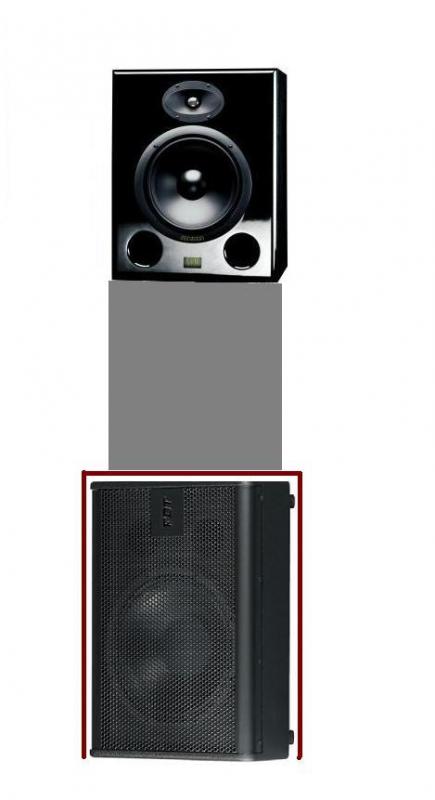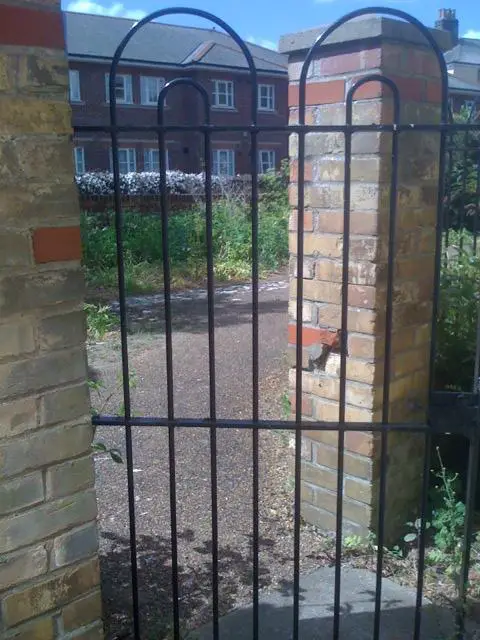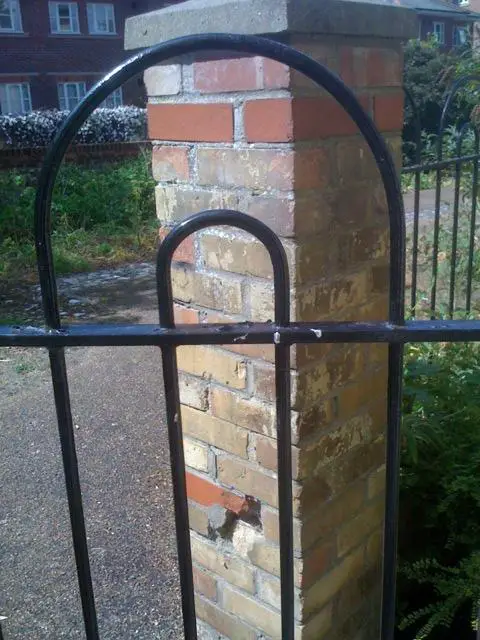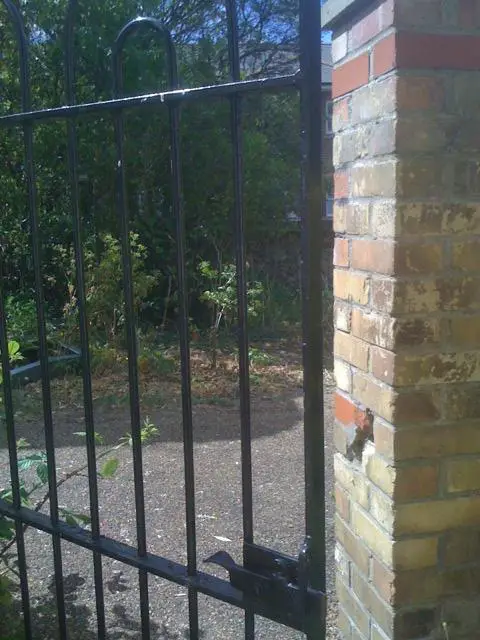Hi all
I think I have finally come up with a plan for my new speaker stands in my recording studio...!
I need to make speaker stands that have a heavy mass and high density (so that they do not transmit sound or resonate). But I also need to have some space at the bottom to site my PA speakers...
Here's an awfully crude and out of scale mock drawing:
The red part will be a metal table, the grey a concrete block. I had racked my brains for how to make the table part - first I thought wood, then I was going to have a concrete table made. But then, whilst at work having a fag (tut tut) I was looking at the heavy duty metal gate and thought - hmmmmm - I can use that!
But I'm not even sure what metal the gate is from. It's very heavy duty and weighs loads. I'm sure a table made of that would have no problem taking the weight of the concrete block and speaker....
What I have no clue about is where I could go to have something like this made. My first thought was a fence/gate maker, but I'm not sure. So I thought I'd ask on here. As you can probably gather, I'm quite clueless in this area! So any pointers would be great.
Cheers
Max
I think I have finally come up with a plan for my new speaker stands in my recording studio...!
I need to make speaker stands that have a heavy mass and high density (so that they do not transmit sound or resonate). But I also need to have some space at the bottom to site my PA speakers...
Here's an awfully crude and out of scale mock drawing:
The red part will be a metal table, the grey a concrete block. I had racked my brains for how to make the table part - first I thought wood, then I was going to have a concrete table made. But then, whilst at work having a fag (tut tut) I was looking at the heavy duty metal gate and thought - hmmmmm - I can use that!
But I'm not even sure what metal the gate is from. It's very heavy duty and weighs loads. I'm sure a table made of that would have no problem taking the weight of the concrete block and speaker....
What I have no clue about is where I could go to have something like this made. My first thought was a fence/gate maker, but I'm not sure. So I thought I'd ask on here. As you can probably gather, I'm quite clueless in this area! So any pointers would be great.
Cheers
Max





